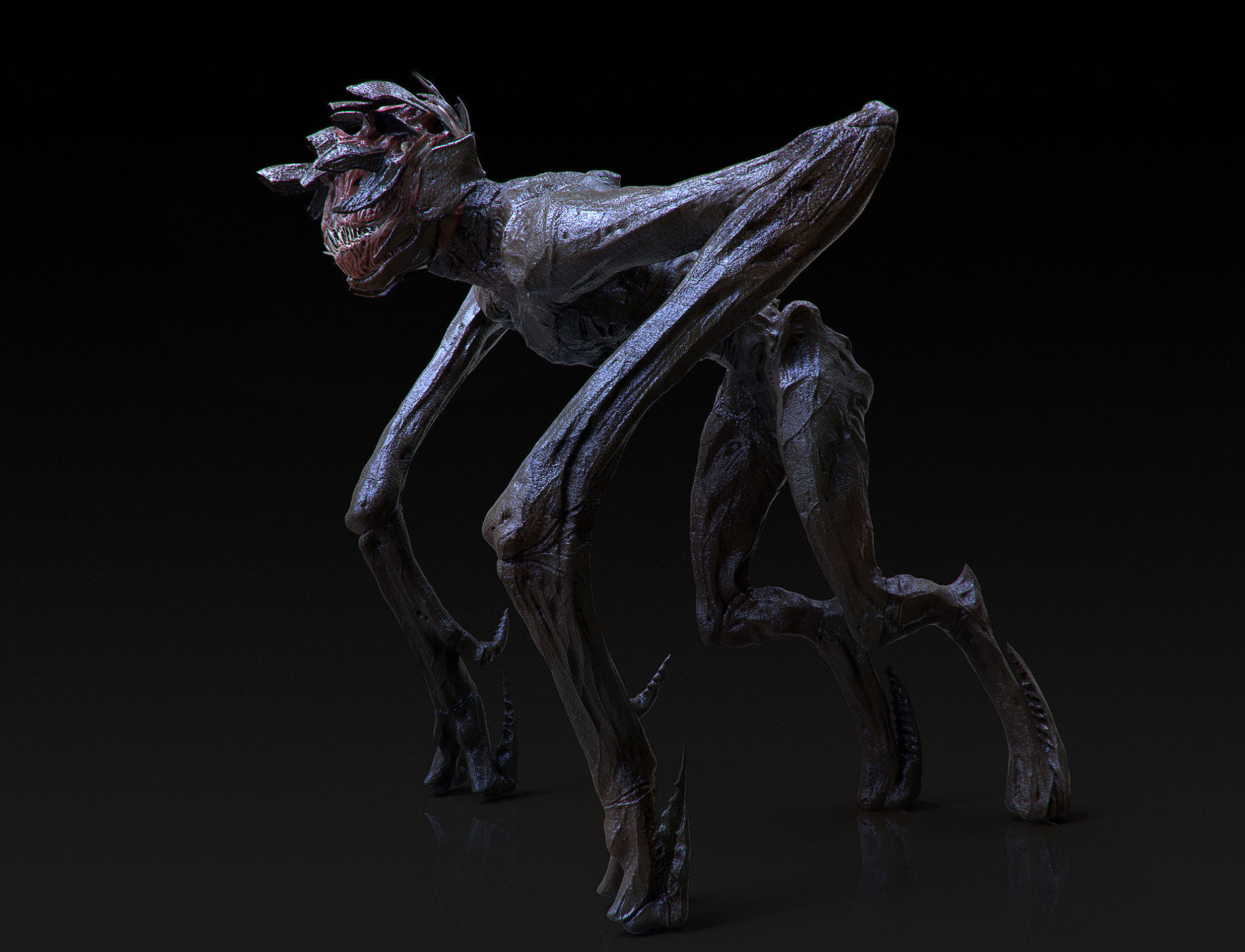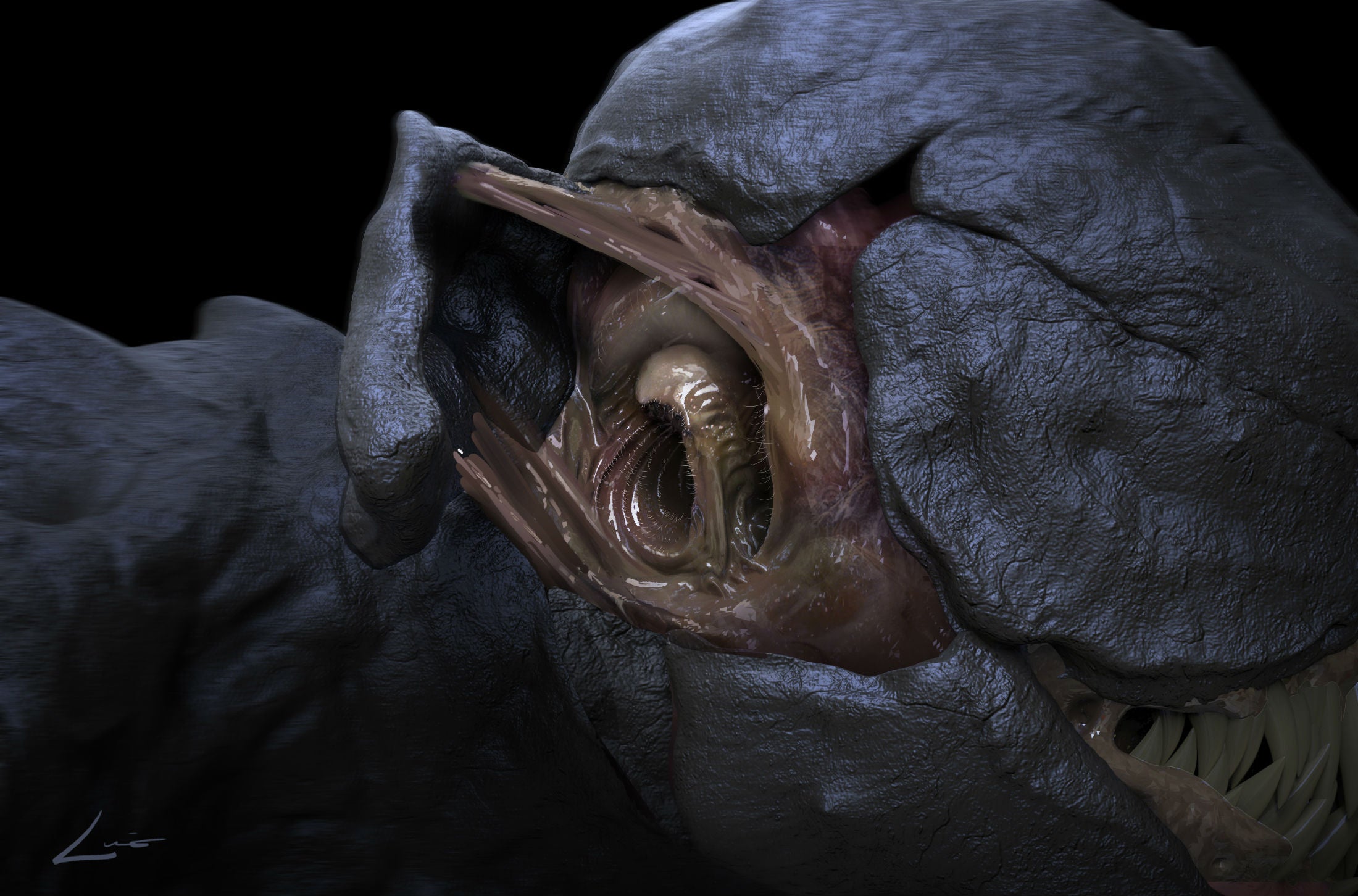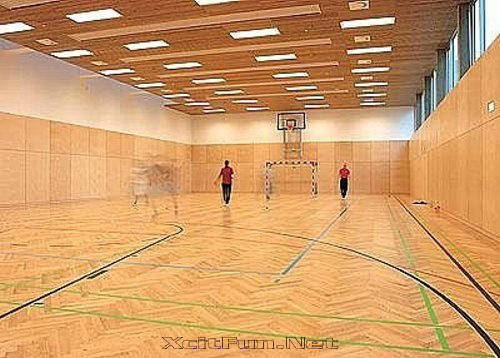

Look at recent kaiju films such as Shin Godzilla that had a motion capture actor as well as render the monster to appear like a suit. With many monster fans pointing out how the Clover from Cloverfield seemed to have inspired many monster designs, I feel it’s a combination of inspiration and a way to ground the creature in CGI form.
#A QUIET PLACE CREATURE FULL#
However, it still needed to be huge, have a head full of teeth, arms, and legs, and, because of it coming out of the water, I felt it needed a tail to justify an aquatic potential origin or existence.” Since it was not a Godzilla movie, it would have been a huge mistake to do things like it.

I am not recalling being told to NOT do Godzilla-like designs, it was more implicit. There were tentacles, there were fewer limbs, more limbs, no limbs… big, broad strokes in search of Clover.

There were many different versions that we explored as we were all looking for what it could be. In an interview with io9, Cloverfield creature designer Neville Page explained “With that, I had to be very efficient with my time and the process of development I chose. And that’s because reality is a basis for these designs. Hell, you can compare the monsters from A Quiet Place and then look at a practical monster such as Sammael from 2004’s Hellboy and the similarities are striking. Not a completely human shape mind you but enough where one could possibly make a creature suit out of them. What do I mean? Well if you look at all the creatures I list earlier you noticed one thing they all have in common and that they have a relatively humanoid shape. But there is a third option that seems to be the basis of the recent similarities in monster design: CGI suitmation. So how do you deal with the challenge of convincing the audience the monsters on-screen are living breathing creatures and not something from a video game? Well as seen in the films that sparked this obsession such as Jurassic Park the effects crew blended both CGI and practical effects, with the practical effects grounding the audience so they have a frame of reference for the CGI, ensuring they aren’t taken out of the film.Ī second method is simply having enough of a budget to make the best possible CGI, something most filmmakers don’t have the greatest of luxuries. Making Monsters Hellboy (2004)Įven with today’s films, CGI is still difficult to nail for monster movies. Even bigger budget films such as 1998’s Godzilla while having competent CGI definitely shows its age.
#A QUIET PLACE CREATURE MOVIE#
Films such as Lost In Space, Mortal Kombat, and Mighty Morphin’ Power Rangers the Movie are some infamous examples of this awkward period of CGI in films were their monsters look pretty bad. Unlike practical effects, CGI can create an uncanny feel in reality and in its early uses…woof it can look VERY bad.

However as seen throughout the decade, this became an overindulgence that heavily dated the films. So one must ask why do these monsters look the same? The answer could lie in the film industry after the creation of CGI.Īfter the release of blockbusters such as Jurassic Park and Terminator 2: Judgement Day in the early 1990s, many filmmakers and studios were wowed by the power of CGI (computer-generated imagery) and its potential of creating anything on the big screen.
#A QUIET PLACE CREATURE SKIN#
These include three elements: long arms that the creatures walk-on in a stance similar to a gorilla, a thin body that isn’t too bulky or muscular, and usually either smooth skin or armor cover not too extreme. But it also sparks a question I’ve been pondering since the release of the first A Quiet Place “Why are do the monsters look familiar?” Then I remember what some call “ The Cloverfield body plan” To explain it dirt simply, many movie monsters of the past decade use of overall body shape similar to the creature seen in 2008’s Cloverfield.įilms such as Super 8, 10 Cloverfield Lane, Godzilla (2014), and yes A Quiet Place all have monsters with very similar body plans. With A Quiet Place Part II hopefully to be released sometime in 2020, monster movie lovers like myself can’t wait to get our fix of seeing badass monsters kicking ass. After the release of blockbusters such as Jurassic Park and Terminator 2: Judgement Day in the early 1990s, many filmmakers and studios were wowed by the power of CGI and its potential of creating anything on the big screen.


 0 kommentar(er)
0 kommentar(er)
